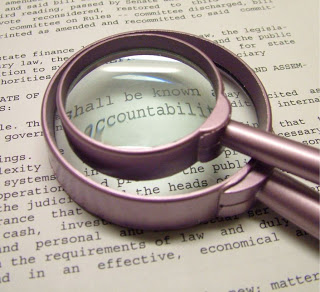Increasingly we demand transparency, and in the workplace there are pros and some cons.
In today’s interconnected, digital world people are able to access more information than ever, and we’re using more data, too. By next year, 2016, it is estimated that there will be 3.4 billion internet users and “1.2 million minutes of video, or the equivalent of more than two years worth, will be consumed every second.”
Why will videos be at the forefront of data streams and downloads? In addition to television and films’ migration to the internet, increasingly, people want a medium that provides a fuller picture. More and more, people want to learn and view the whole truth. This coincides with a push for transparency in politics, nutritional labeling, big bank bonuses, and data collection, to name a few.
People are also accustomed to immediate information access. You can track a flight in real-time, review medical records, pay bills, “see” a friend half way around the world, all with a few clicks of the keyboard. You can also do substantive and thorough research that had, in the past, been impossible without a library card and many hours to spare. Additionally, the rise of social media provides an outlet for those who want to share more about themselves, or gain immediate information about others.
Demand and Access in the Workplace
How are these two things: demand and access, changing the workplace? Companies, leaders, and employees are being asked to reveal information about themselves more and more. Trends in society impact business. People don’t want leaders who distance themselves and seal off information. They want leaders who are, increasingly, transparent. In a Forbes article about transparent leadership, Glenn Llopis writes, “besides the need for job security and career advancement opportunities – employees want to be a part of a workplace culture that puts a premium on delivering the truth. They desire their leaders to be proactive in sharing where the company is headed and forthright about its future.”
The hunger for transparency extends to all areas of the workplace. More than ever, employees are being monitored, open floor plans are peppering office spaces, and companies are sharing detailed financial information. However, as referenced in a Wall Street Journal article, there are drawbacks to this seemingly utopian clarity: “more transparency isn’t necessarily better. Rather, smarter transparency is better. If leaders can adopt a transparency strategy that strikes a balance between openness and privacy, that tears some walls down while leaving others in place, they are more likely to get the results they want.”
Here are some potential benefits of transparency in the workplace:
- Trust can be cultivated
- Authentic relationships can grow
- Productivity and efficiency can increase
- Innovation and collaboration can emerge
- Profits can increase
Smarter transparency is important, as there can be negative sides to complete transparency. Here are some ways in which transparency is coming to the workplace, for better or worse:
Social Media
People can often view each other’s profiles, both professional and personal. Social networking can be a way for people to package themselves, advertise, and find opportunities. However, if not properly used and monitored, social media can be detrimental. People have been fired from their jobs and some companies have deeply embarrassed themselves and alienated customers.
Employee Monitoring
Monitoring employees can increase safety, comprehension of policies, and productivity. It can also provide a system to acknowledge employees’ strengths and accomplishments that might otherwise go unnoticed. Employee monitoring can also provide feedback on errors and help save money by addressing employees who are utilizing work hours to do personal business. On the downside, employees can sometimes feel uncomfortable or resentful about being monitored. UPS workers are some of the most monitored employees out there, which brings many benefits to the company and often to the drivers, however, according to one driver, “it does feel like big brother.”
Open-Book Management
Traditionally only a few people are aware of the detailed finances of a company. Some companies are now sharing all finances so that all employees can feel like one of the “players”. According to a Harvard Business Review article, Share your Financials to Engage Employees, by being a player employees can know the rules and feel invested. With transparency, such as sharing all salaries, honest and difficult conversations will happen and, “tough conversations, over the long-term, are a good thing.”
Open Office Layout
For decades open-office layouts, where employees work side by side, have been popular. According to a New Yorker article on the open-office concept, it was originally conceived to “facilitate communication and idea flow.” The idea of employees being siloed behind closed doors seems counterintuitive when thinking of transparency. However, as modern and forward-thinking as the open-office layout seems, this trend has its faults. Many employees experience decreased productivity, and only engage with people sitting right near them. Studies have also shown that health decreases when more employees are seated together. Noise can be the largest issue of all. According to one employee who works in an open seating environment, “Headphones have replaced cubicles,” he said. “I wear them to let people know I’m busy. “
Increasingly we demand transparency, and in the workplace there are pros and some cons. Being smart about the transparency we’re seeking and providing is important, as we must remember that above all transparency comes with accountability.

